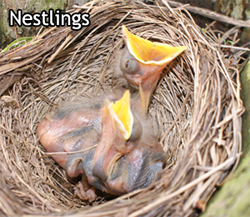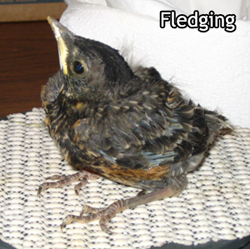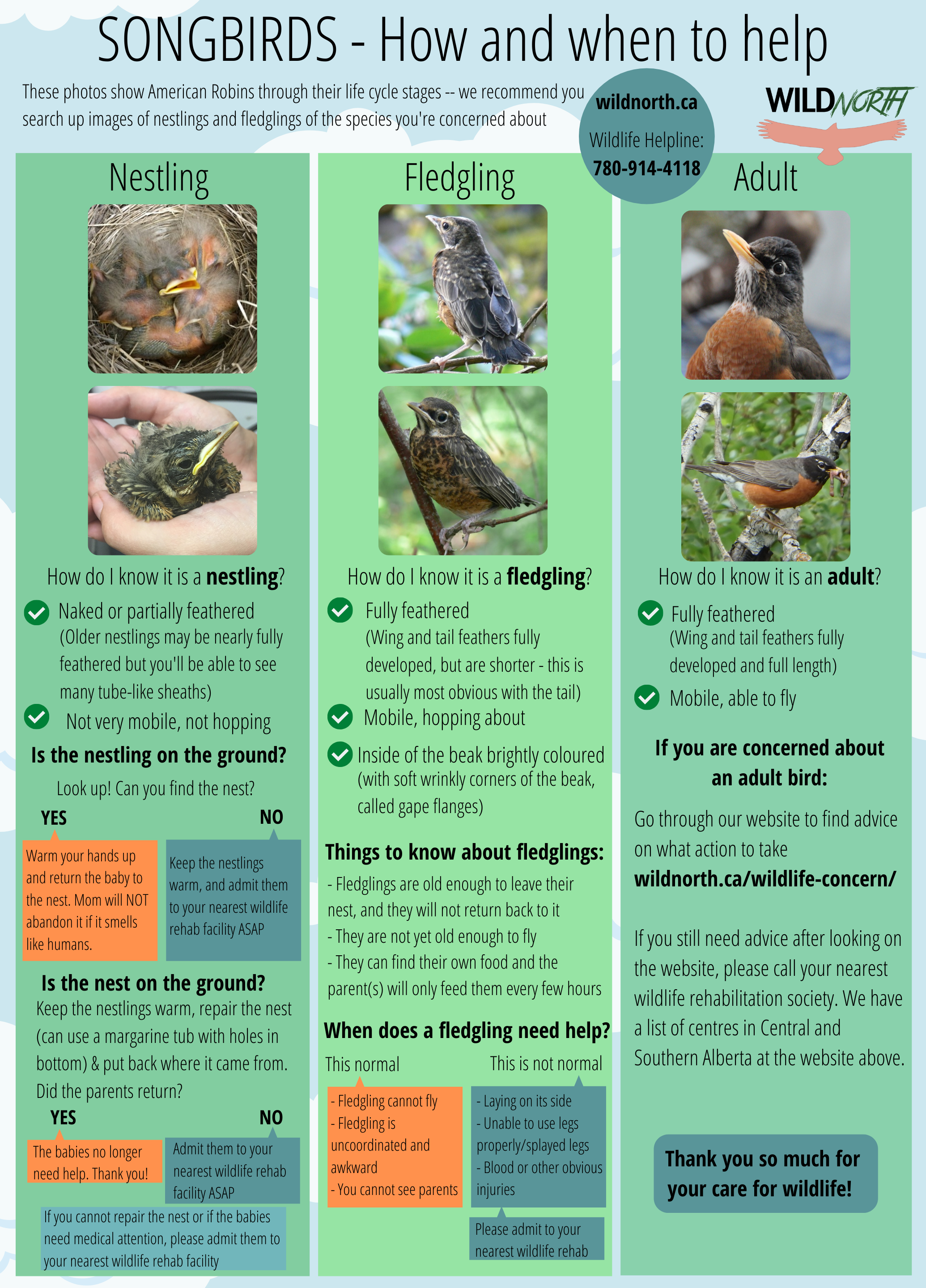The young of many bird species spend several days on the ground, practicing, before they are able to fly. It is at this time in their lives when most well-intentioned humans bring them to us.


If you see a bird on the ground, remember, in the spring (May -August) this could be a young bird (that looks like an adult) that is learning to fly. If you are concerned about it, observe the bird from as far away as possible and watch if other bird(s) attend or call to it. At this stage the parents will still feed the fledgling every couple of hours. It will be helpful if you do a quick Google Image search to see fledglings of the species you are watching; you can also call us and ask if you can send us a photo of the bird in question and our staff can identify and age it. If you are concerned that the parents are no longer around – watch closely (from a distance) as it only takes a few seconds for an adult to feed the young bird and this can easily be missed. Please do not feed the young one as it is their hunger calls that tell the adult where they are. At this point the parents may only be feeding them every 4 hours or so.
If it is in imminent danger (i.e. being stalked by a cat) it is all right to pick up the bird and place it in a tree out of reach. We cannot admit a baby just because there is a risk of predation from a cat, or dog, though. These are dangers they need to learn how to manage on their own — but we welcome you to advocate for keeping cats indoors and keeping dogs on leashes/monitoring them during baby season!

